July 27, 2023 by Fuel & Fortify
Why Core Strength Must Be a Priority for Runners

While many runners focus on improving their leg strength and cardiovascular endurance, they often overlook the importance of core strength. A strong core is the foundation of efficient running and can significantly enhance performance and reduce the risk of injury.
When people think of the core, the first image that often comes to mind is a chiseled 6-pack. Yet, core is much more than just the visible abdominal muscles.
It is a complex system of muscles that play a crucial role in stabilising and supporting the spine during movement—all of which are crucial when pounding the pavement.
Put simply, your core is everything from your shoulders down to your hips.
Sub 2-hour and current marathon world record holder, Eliud Kipchoge and his team members at NN Running Team, emphasise core stability and strength as a vital part of their training. They will typically engage in a couple of hours of core stability exercises per week on top of a mountain of volume on the track and road (roughly 16 hours).
This insane amount of miles aside—relatively speaking—it’s clear they dedicate a considerable portion of their training hours to core—and the results really speak for themselves.
This study (Tong et al.) introduced a 6-week “functional” core program alongside interval training, aiming to improve 1-hour treadmill performance and running economy (RE) at the onset of anaerobic threshold (~4 mmol/L).
Running economy (RE) can be difficult to neatly define, so what do we mean by it?
Typically, RE is expressed as the amount of oxygen needed at a given speed. Usually this involves measuring the millilitres of oxygen per kilogram of body weight used per kilometre (ml/kg/km).
RE can encompasses a range of factors—some of which are down to genetics—but others such as breathing rates and core stability are certainly trainable.
Results from the study showed that the addition of core training to interval training led to:
- Significant improvement in 1-hour running performance, doubling the gain (distance) of the control (non core-trained) group.
- 5-6% improvement in RE in the core-trained group, but no improvement in the control group.
It’s thought that those that engaged in core training improved their “base in the lumbopelvic–hip region, such that lower limb movements during the run were performed in a more linear manner, improving running performance.”
In terms of a direct correlation to endurance performance however, the literature is still somewhat inconclusive. One study (Sato et al.) shows an improvement in 5K times while another study (Cleveland) shows only a minor improvement in half marathon times.
What is clear though, is that core muscle fatigue significantly diminishes performance with respect to high-intensity running efforts (>85% VO2). So seeking to delay the onset of this fatigue through improving your core endurance can only ever help.
If you are serious about improving your core stability for an upcoming event or simply just general fitness, we’ve handpicked our top picks from YouTuber James Dunne’s video detailing Eliud Kipchoge’s core exercises, which were originally showcased in an NN Running Team’s strength training video. We can’t promise this will mean you can keep up with the double Olympic champion however.
Single-leg bridge (3 x 20 each leg)
Lie on your back with your knees bent and feet flat on the floor. Lift one leg off the ground and push your hips upward, creating a straight line from your shoulders to your knees. Engage your glutes and core so you don’t twist your torso.

Glute kickbacks (3 x 20 each leg)
Start on all fours with your hands directly under your shoulders and knees under your hips. Keeping one knee bent at 90 degrees, lift the leg backward, focusing on contracting your glutes. Lower the leg back down and repeat on the other side.
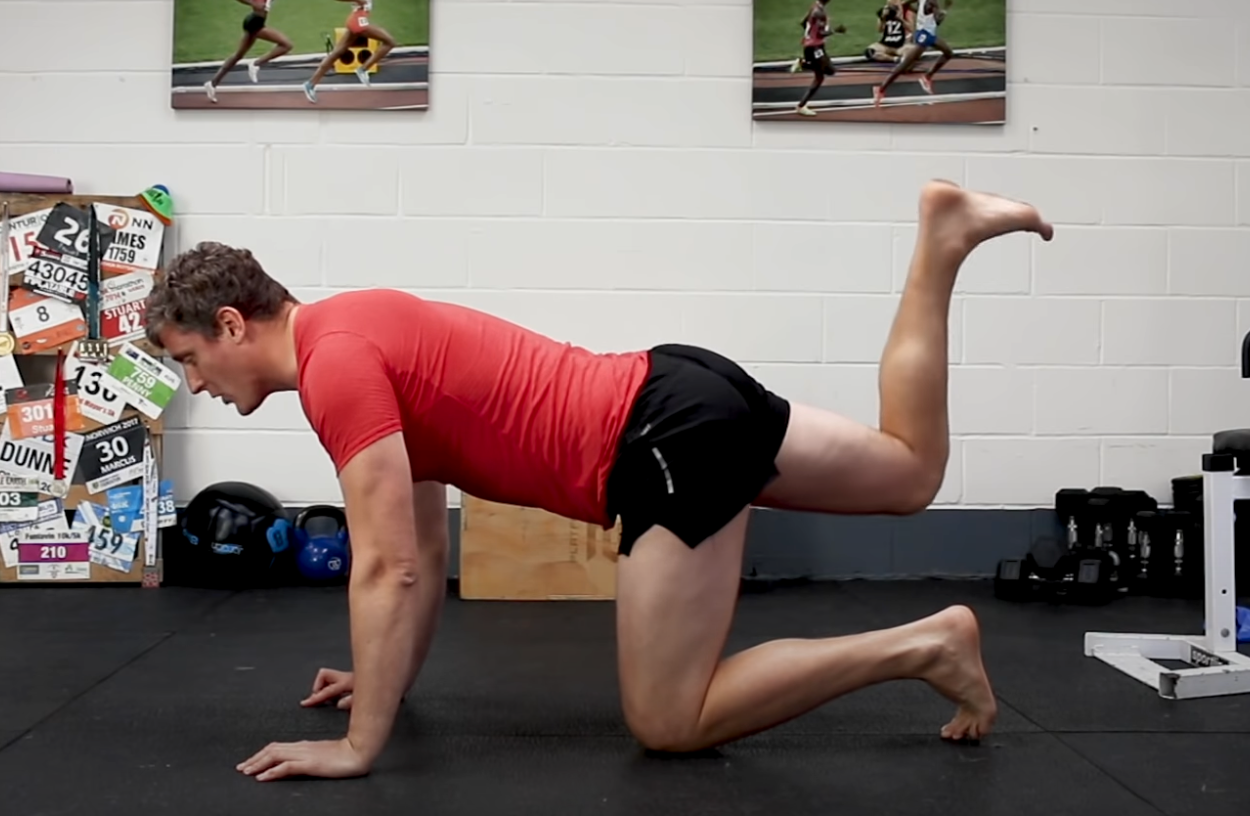
Dead bugs (3 x 60 seconds)
Lie on your back with your arms extended toward the ceiling and your knees bent at 90 degrees. Slowly lower one arm and the opposite leg towards the ground while keeping your core engaged. Return to the starting position and repeat on the other side.
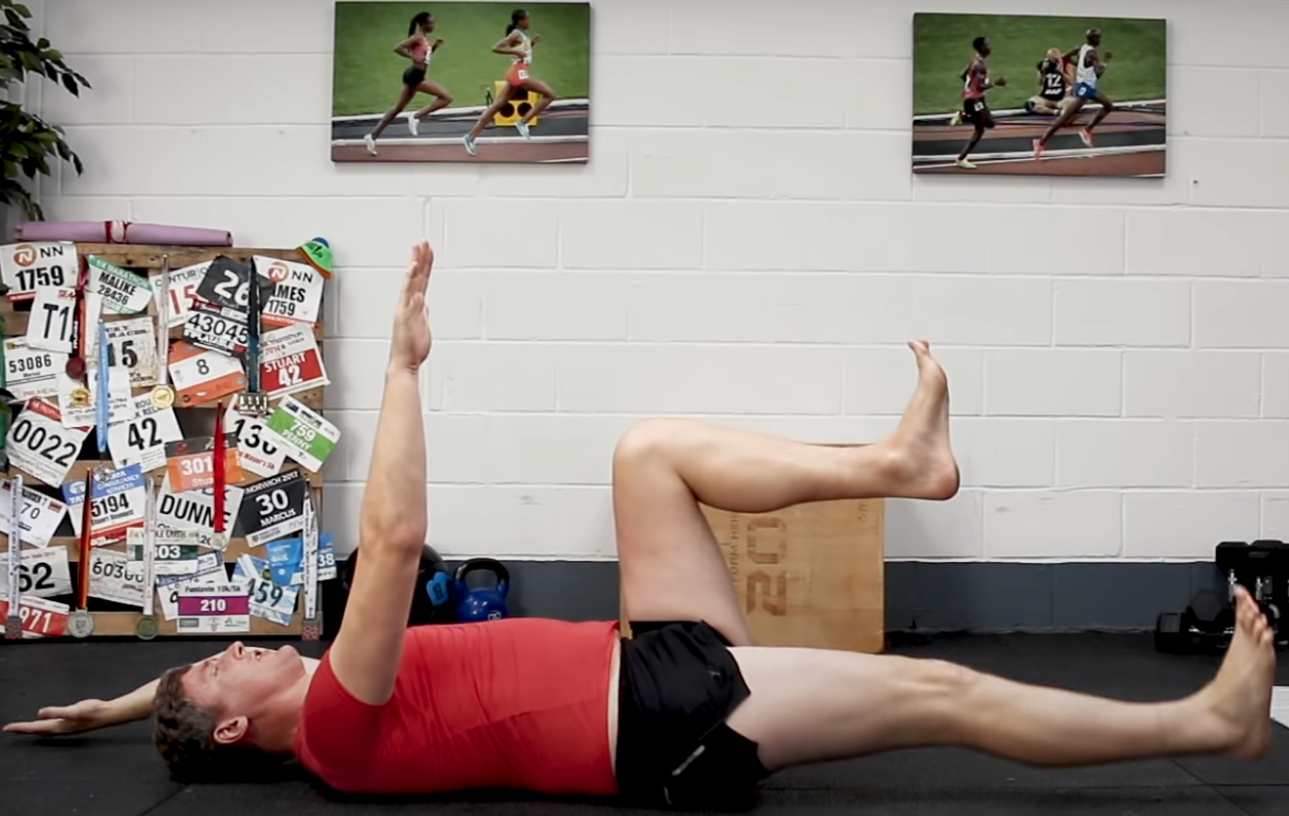
Fire hydrants (3 x 20 each leg)
Begin on all fours with your hands under your shoulders and knees under your hips. Lift one leg out to the side while keeping your knee bent at 90 degrees. Lower the leg back down and repeat on the other side. Optionally, you can use a band here but certainly not required.
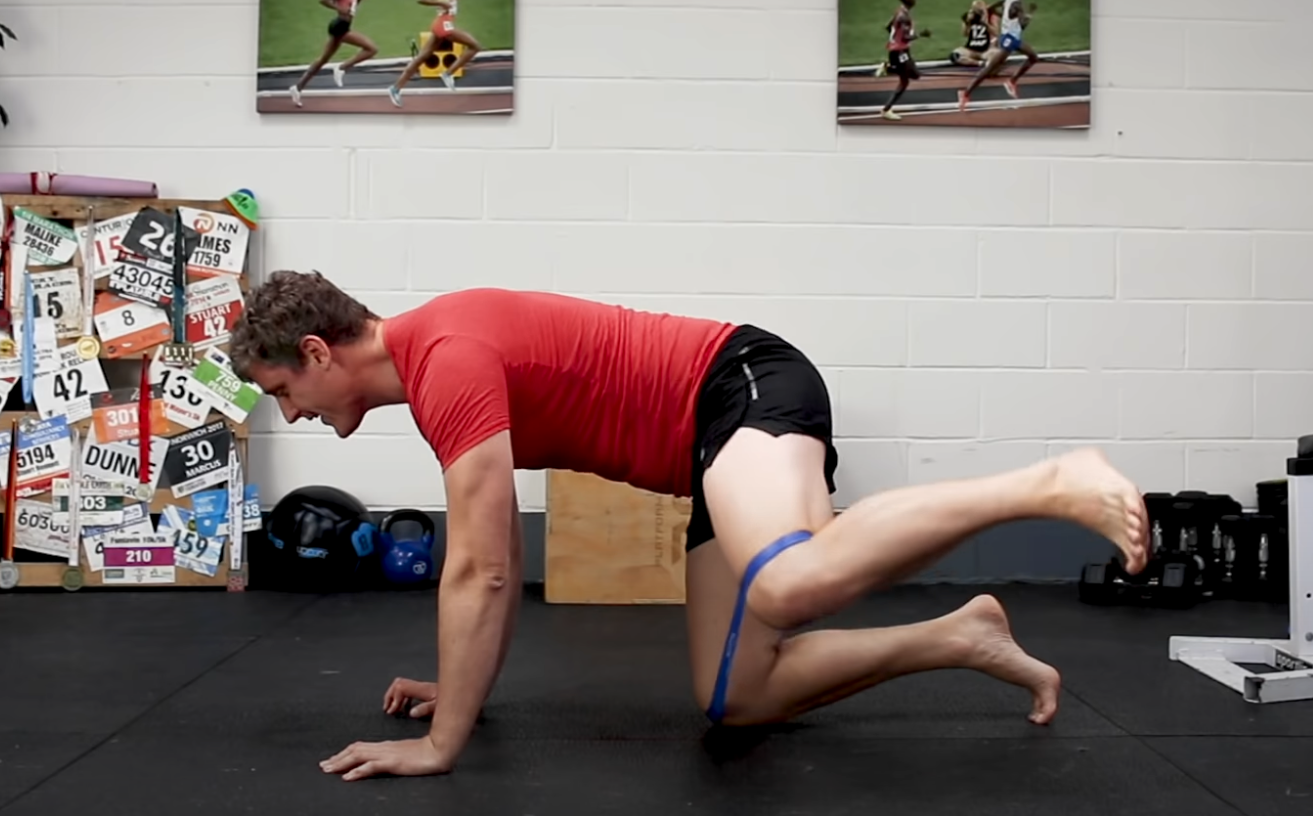
Oblique presses (3 x 20 each leg)
Start by lying face up with your legs raised in a tabletop position, knees bent at 90 degrees, and aligned over your hips. Extend your right leg out straight, keeping both feet flexed and buttocks squeezed as you hover the leg slightly above the floor.
Engage your abdominal muscles to press your lower back into the floor. Position your left hand on the front of your left quad (thigh).
Now, push your left quad into your left hand while simultaneously resisting the pressure by pushing your hand against your quad. You should feel strong tension in your core, though there won’t be any visible movement in your body. Hold 20 seconds.
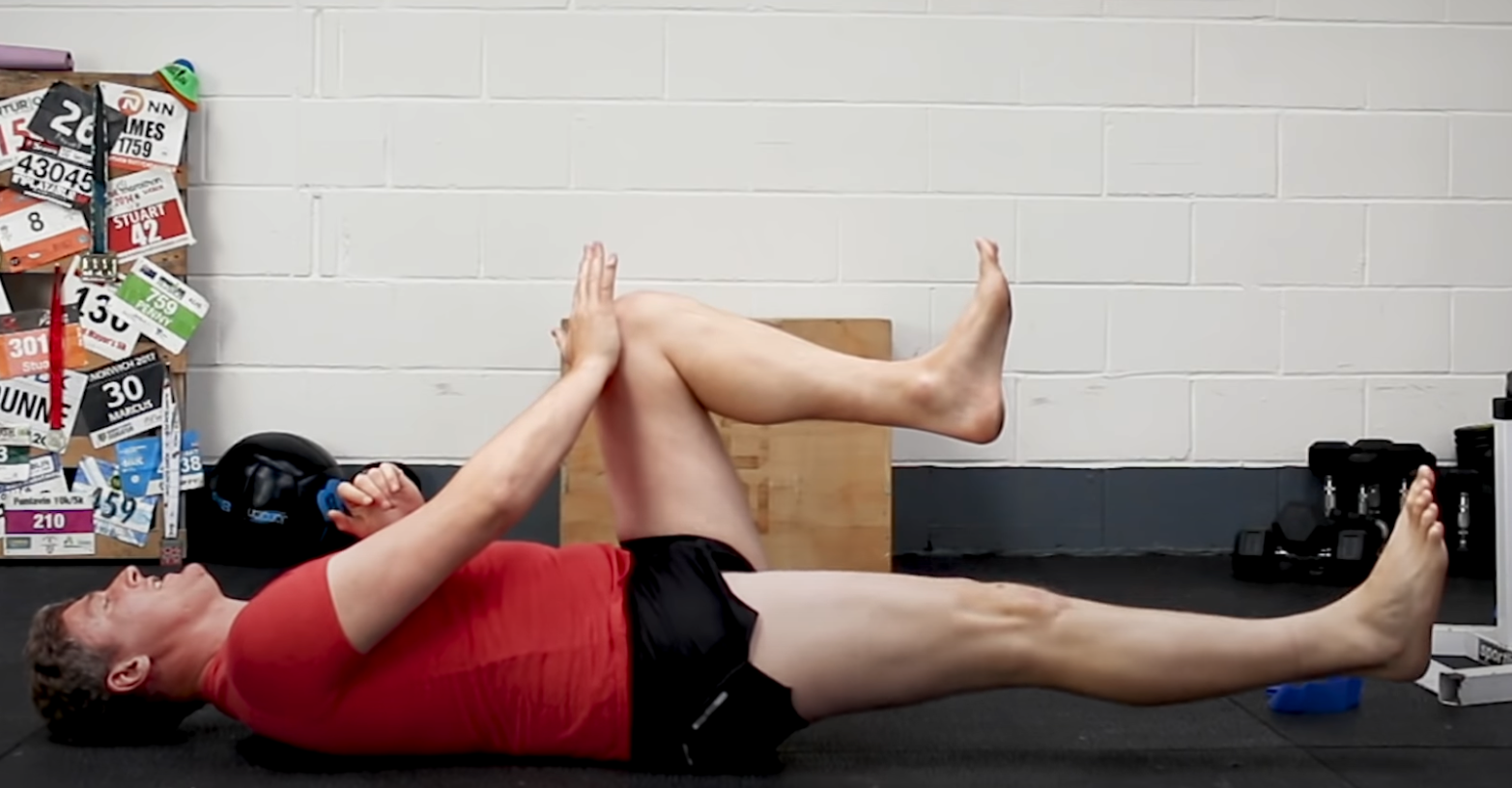
Plank (3 x 60 seconds)
Most likely the most familiar of the bunch! Start in a push-up position, resting on your forearms and toes, with your body forming a straight line from head to heels. Hold this position, engaging your core and glutes to maintain stability.
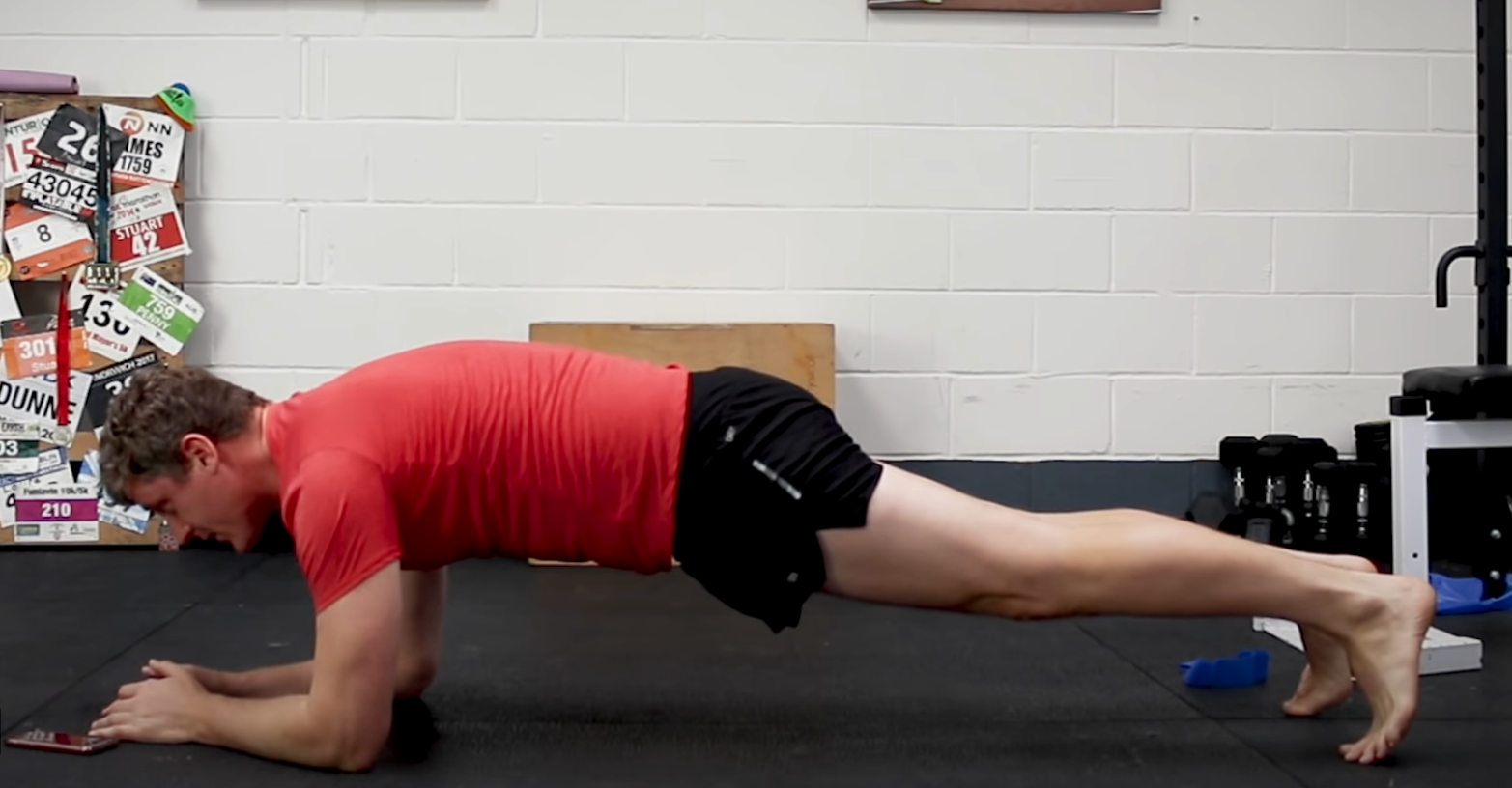
Building a strong core is a game-changer for runners seeking improved performance and injury prevention. Take what you will from the above or use it as a base for your own custom core workout! Like any conditioning, it’s consistency over intensity here and we advise sticking to body weight exercises initially that incorporate balance or rotational elements—and build up your program from there!